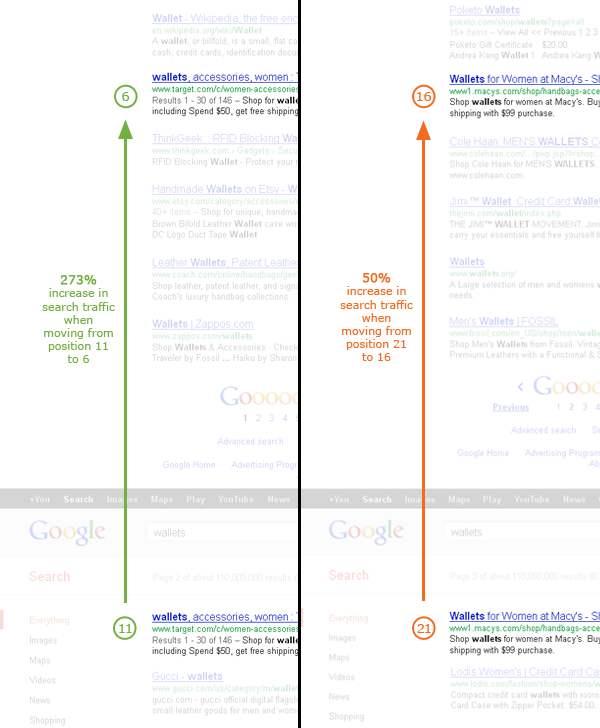The Forgotten SEO Strategy: Targeting Striking Distance Keywords
How you strategically approach your own unique search marketing landscape may be the first of many decisions you make on your search marketing journey, but it is also the most important. A difference of inches when aiming the arrow can translate to feet downrange. SEOs can often approach selecting target keywords with a strict “I’m-going-to-focus-on-the-keywords-with-the-highest-search-volume” […]
How you strategically approach your own unique search marketing landscape may be the first of many decisions you make on your search marketing journey, but it is also the most important. A difference of inches when aiming the arrow can translate to feet downrange.
SEOs can often approach selecting target keywords with a strict “I’m-going-to-focus-on-the-keywords-with-the-highest-search-volume” mentality, while others favor a ‘flavor-of-the-day’ mindset and center on the keywords their CMO cares about most at the moment.
An often overlooked strategy for keyword building is to focus on those keywords in striking distance position — keywords ranking on page two of the search results.
Moving striking distance keywords can be less challenging than those already on page one. And, keywords on page 2 are in prime position to move into high visibility positions, and unlike keywords on page 3 or higher, moderate upward movement of these keywords can mean substantial increases in traffic.
Not All Rank Movement Is Equally Impactful
Take the example of a keyword searched 500,000 times per month for which you are ranking in position 11. By utilizing Slingshot SEO’s click-through curve, we were able to estimate the increases in search traffic experienced after rank movement: An improvement of 5 positions (from 11 to 6) resulted in a 273% increase in traffic while the same 5-position movement from 21 to 16 resulted in a marginal traffic increase of 50%.
This difference in traffic gains for the same rank movement is due to the uneven distribution in how users click on search results and becomes a phenomenon that savvy search marketers can leverage with a bit of focused analysis.
Of course, not all keywords are created equal, and it may be challenging to move dozens (to hundreds) of keywords from striking distance onto page one, so taking a bit of time to triage for striking distance keywords that matter most to you will be an important step before focusing on tactics.
The Technology-Enabled Strategic Approach
So how does one access this lower-effort, high-impact category of keywords? Those who use basic rank-tracking software will have to work for it, achieving the appropriate segmentation with some fancy Excel footwork, due to some of the limitations inherent in basic rank tracking software.
By employing SEO technology to manage larger keyword sets, marketers can better zero-in on target keyword sets by employing automatic segmentation. Those in an enterprise environment who have access to a full-featured SEO platform will be privy to automatic keyword segmentation of search ranking and have these striking distance keywords readily available at their fingertips. (Disclosure: my company does offer a feature of this nature in the Conductor Searchlight tool, and is used in the example below.)
Striking Distance Or Strike Out
Regardless of what technology you end up using, marketers who view their search visibility through the lens of striking distance keywords and act on the insight with on- and off-page optimization activities will be in a position to grab some quick wins. Long-term strategies can be developed concurrently for more competitive keywords, ensuring a well-rounded SEO strategy.
Contributing authors are invited to create content for Search Engine Land and are chosen for their expertise and contribution to the search community. Our contributors work under the oversight of the editorial staff and contributions are checked for quality and relevance to our readers. The opinions they express are their own.
Related stories
New on Search Engine Land
